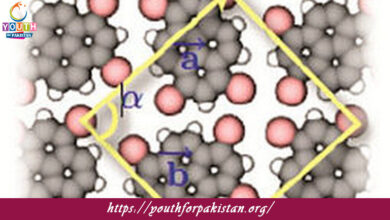Supramolecular Materials Quiz with Answers

Welcome to the Supramolecular Materials MCQs with Answers, it helps learners quickly identify areas for improvement in Supramolecular Materials Online Test.
| Supramolecular materials refer to complex structures formed through non-covalent interactions between molecules, leading to unique properties and functionalities. These materials are integral to advancements in nanotechnology, biomaterials, and drug delivery systems.
In a supramolecular materials quiz, MCQs on supramolecular materials typically cover topics such as self-assembly processes, where molecules spontaneously organize into ordered structures based on non-covalent interactions like hydrogen bonding and π-π stacking. Self-assembly multiple choice questions explore the principles governing the formation and stability of supramolecular architectures, crucial for designing new materials with tailored properties. Molecular recognition MCQs focus on specific interactions between host molecules and guest molecules, essential for applications in sensing, catalysis, and drug delivery. Nanotechnology exam questions challenge students to apply their understanding of supramolecular materials in developing nanoscale devices and materials with precise control over structure and function. Biomaterials MCQs delve into the use of supramolecular materials in biomedical applications, including tissue engineering scaffolds, controlled drug release systems, and bioresponsive materials. |
Supramolecular Materials Online Quiz
By presenting 3 options to choose from, Supramolecular Materials Quiz which cover a wide range of topics and levels of difficulty, making them adaptable to various learning objectives and preferences. You will have to read all the given answers of Supramolecular Materials Questions and Answers and click over the correct answer.
- Test Name: Supramolecular Materials MCQ Quiz Practice
- Type: Quiz Test
- Total Questions: 40
- Total Marks: 40
- Time: 40 minutes
Note: Answer of the questions will change randomly each time you start the test. Practice each quiz test at least 3 times if you want to secure High Marks. Once you are finished, click the View Results button. If any answer looks wrong to you in Quiz, simply click on question and comment below that question, so that we can update the answer in the quiz section.
Download Certificate of Supramolecular Materials Test
On the end of Quiz, you can download the certificate of the quiz if you got more than 70% marks.
Supramolecular Materials Flashcards

The process by which supramolecular materials spontaneously organize into well-defined structures is called ________.

The process by which a supramolecular material disassembles under certain conditions is called ________.

Which of the following is a common method for controlling the properties of supramolecular materials?

The process by which supramolecular materials organize into ordered structures is driven by ________ interactions.

The process by which supramolecular materials undergo a change in structure in response to an external stimulus is called ________.

The process by which supramolecular materials form stable structures is driven by ________ interactions.
If you are interested to enhance your knowledge regarding Physics, Computer, and Biology please click on the link of each category, you will be redirected to dedicated website for each category.




